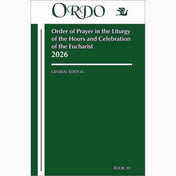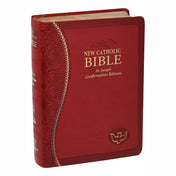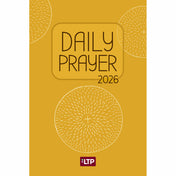Ever wonder how to go deeper into the Word of God? Of course, there are books to read, podcasts and apps to listen to, and study groups to join. And each of these has its attractions and benefits. But how to begin? And where? And how might it really deepen my prayer—i.e., real communication with God—and not just my knowledge about the Scriptures?
If any of this resonates with you, perhaps you might find the time-tested method of Lectio Divina (“divine reading”) of interest and helpful. It had been a practice of monastic communities for centuries, has contributed to the formation of saints, and been strongly recommended for the faithful in our day by the likes of Robert Cardinal Sarah: “Lectio divina is a great river that carries all the riches accumulated over the course of Church history by the fervent readers of God's Word.” In other words, in this method we are not invited to read and mediate on God’s Word in the Scriptures alone, but in the company of one or more spiritual masters.
|
|
Where to begin? Tan Books has recently published a very handy “workbook” of sorts, Lectio Divina with the Spiritual Masters: The Gospel of John with St. Augustine (2025), compiled and adapted by Rev. Peter A. Heasley, S.Th.D., a priest of the Archdiocese of New York. This paperback of 241 pages provides the entire text of the Gospel of Saint John, numerous citations from the work of St. Augustine to assist the reader in understanding the sacred text, questions and other observations by Fr. Heasley, and plenty of space for the reader to make his/her own written notes and comments. This book follows the four classic steps in lectio divina: 1) lectio (reading, slowly) the sacred text, 2) meditatio (mediating on it with the spiritual master, in this case, Augustine), and 3) oratio (prayer), all leading to 4) contemplatio (contemplation). Every step is succinctly explained and guided in this helpful volume. The purpose of it all: greater union with God through His Word. |
One note regarding this text: Fr. Heasley is a strong advocate and defender of the Douay-Rheims translation of the Bible (produced in the early seventeenth century), and in this book, he explains why. Some readers might find it helpful to have another good, perhaps more modern and more easily understood by some, translation of the Scriptures at hand.






1 comment
Just want to give kudos for a quick, yet thorough review, of Fr. Heasley’s new resource. Like the author, I am also a strong advocate of the Douay-Rheims translation of the Bible. And this is a wonderful way to get into interior prayer using the Lectio Divina method. Thanks for the review!